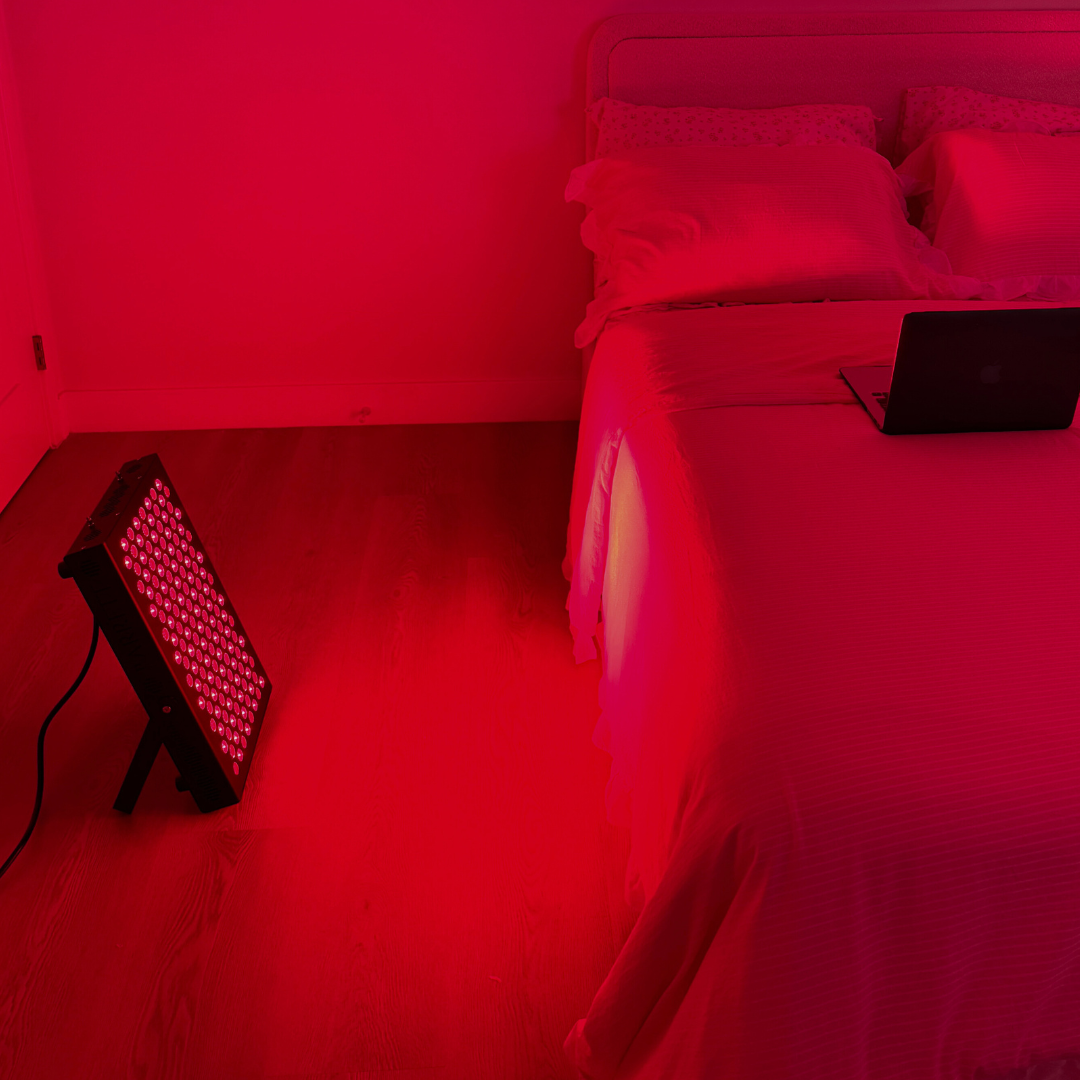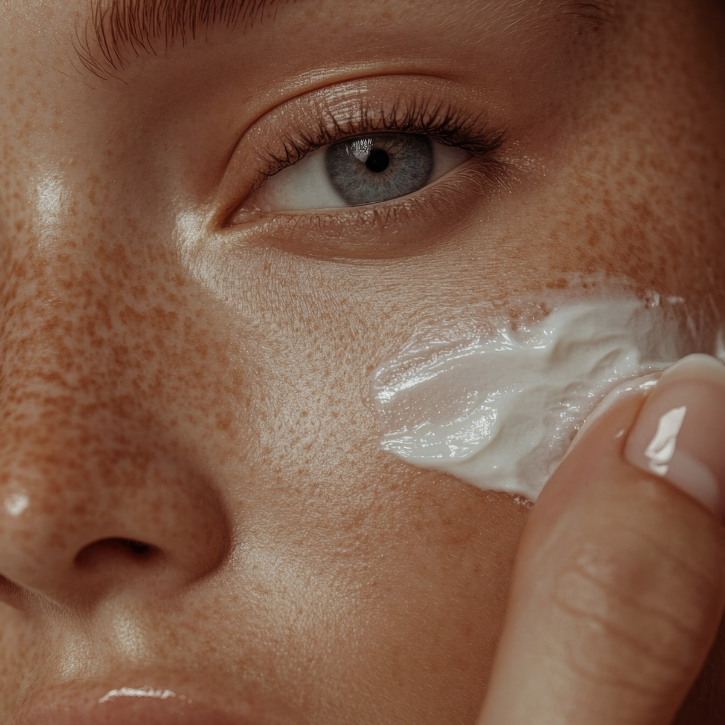Red Light Therapy: The Insider Secret to Radiant, Ageless Skin

The best way to achieve healthy, glowing skin isn’t by reacting to breakouts or wrinkles—it’s by staying ahead of them. A strong skincare routine that works deep at the cellular level keeps your skin vibrant, resilient, and ready to face anything.
One of the most exciting innovations in skincare today is red light therapy. This cutting-edge treatment uses near-infrared light to boost collagen, reduce inflammation, and fight everyday damage, all while keeping your skin smooth and firm. In fact, a 2023 study found that 100% of participants saw visible improvements in skin elasticity and wrinkle reduction after regular use.
So, how does red light therapy work, and why is it becoming a must-have in skincare routines? Keep reading as we break down the science, benefits, and how you can start using it for long-term, year-round skin health.
How does red light therapy support my skin barrier?
Since exposure to red light triggers optimal cellular function, it allows the skin barrier to heal itself faster while also adding protection from further damage. Studies suggest that exposing the body to low-wavelength red light can rejuvenate cells, improve collagen production, and assist in healing, all things equivalent to a fountain of youth for the beauty-obsessed. This makes photobiomodulation ideal for people with pre-existing skin conditions like acne, eczema, psoriasis, hyperpigmentation, and sun damage. With more stimulated mitochondria, skin cells can heal faster and increase collagen production, leading to a healthier complexion.

What are the benefits?
While more testing is needed, there is evidence that red light therapy does more than assist overall skin health. By accelerating cell production, photobiomodulation could relieve oxidative stress caused by external toxins that can lead to exacerbated symptoms of aging, diabetes, cancer, and inflammation. Beyond that, photobiomodulation has full body healing benefits — in fact, in the 1990s, the U.S. Navy SEALs began using LED light therapy for wound healing and regenerating damaged muscle tissues.
Other benefits include:
- Stimulates hair growth
- Supports blood circulation
- Reduces inflammation
- Treats burns
- Alleviates joint pain
How often should I use red light therapy?
Frequent use of red light therapy is encouraged, as consistency is key for the best results. One study found that out of 90 patients, over 90% noticed visible improvement in their skin after using a red light device for four consecutive weeks. Daily use of red light panels is generally safe, but dermatologists recommend a minimum of two to three sessions weekly to experience a noticeable change in the skin, though specific use instructions depend on the device. Most surface-level treatments can benefit from as little as 2-5 minutes of red light exposure while deeper tissue therapy may require around 10-15 minutes.
Should I prep my face before using my device?
Devices should be used on clean, product-free skin, as many products contain ingredients that can interfere with or block red light from penetrating the epidermis. Some products like AHAs, BHAs, and retinol can increase sensitivity and should be avoided during treatment.
What products should I use after a red light therapy treatment?
Although users should undergo red light therapy with a bare face, using the right products after treatment is a great way to support the best results. Here are some skincare options ideal for hydrating and protecting the skin:
- Niacinamide is excellent for evening skin tone and texture
- Hyaluronic acid keeps the skin hydrated while accelerating healing
- Peptides encourage collagen production
- Green tea extract reduces irritation
- Broad-spectrum sunscreen is a vital part of maintaining the results of red light therapy by protecting the skin from further damage.
Does red light work for anti-aging?
Most wellness enthusiasts know that the trick to anti-aging methods is knowing it’s a marathon, not a sprint; by establishing daily healthy habits and routines, our bodies have a better chance of aging gracefully and enduring the effects of gravity. While there is no way to literally reverse the clock, the biggest catalyst of the visible effects of aging is inefficient cellular function, which in terms of skincare, means skin cells losing laxity and slowing reproduction.
Photobiomodulation allows us to conserve existing skin cells, optimize their health, and assist in collagen production. Collagen is the primary protein that gives our skin, bones, and joints structure — the older we get, the less our bodies naturally produce it, leading to wrinkles and sagging skin. With more collagen, the skin takes on a firmer, smoother, and more youthful appearance.
Can I do it at home?
The best part about red light therapy is that it’s easy to incorporate into your everyday at-home wellness routine. Although people looking for full-body treatments may need to seek professional services, there are various portable light therapy devices for at-home use.
Barrett Recovery’s red light therapy mask utilizes near-infrared, red, blue, and amber/yellow light to specifically target the facial region. The red light feature is optimal for anti-aging; amber light reduces inflammation while soothing irritated skin; and blue light targets bacteria, making it ideal for acne treatment.
For larger, targeted areas other than the face, Barrett Recovery’s LED panel is designed to be hung or placed independently. It utilizes RED 660nm + NIR 850nm wavelengths (NIR refers to near-infrared light, which is invisible to the naked eye but still promotes cellular health). At 19.7" x 11.8" x 2.6, it’s the perfect size for at-home use and powerful enough for full-body treatments. It includes a built-in timer for stress-free sessions and adjustable settings to customize the light’s intensity.
What is the optimal emission for an at-home device?
Harnessing the correct wavelength determines the efficacy of an at-home red light therapy device, and research shows that between 620 and 670 nanometers is the sweet spot with 660 being the most popular setting to deeply penetrate the skin. Using a device that combines red light with near-infrared further increases collagen and elastin production.
Does red light impact melasma?
Melasma is a common and benign skin condition that causes dark-colored patches. It frequently occurs in women, especially pregnant women, and typically appears on the face a shade darker than the person’s usual skin tone. While red light therapy isn’t harmful for people with melasma, and some have experienced benefits from increased collagen production, there isn’t enough scientific evidence proving it is an ideal treatment for the condition.
Are there risks?
Research shows that red light therapy is safe when used correctly. It is a nontoxic, noninvasive procedure that does not use cancer-causing UV light. However, when red light is misused, it can damage the eyes and skin, so it’s essential to follow instructions carefully. People taking Accutane or experiencing skin rashes should not use LED light therapy. To avoid risks and complications, the best course of action is to consult a licensed, board-certified dermatologist or cosmetic practitioner before beginning treatments. Pregnant people should avoid red light therapy.
Is red light therapy safe for my eyes?
Direct contact with red light isn’t dangerous for the eyes, but the intensity of the emissions or prolonged exposure can cause damage. Users should wear eye protection during sessions to prevent irritation and avoid looking directly into the light.
How long does it take to see results? Are they permanent?
Photobiomodulation immediately affects the skin, but the device must be used consistently to see a visible difference. Most people see visible results after around three weeks of 15-20 minute use three to five times a week. Red light therapy provides permanent results for some conditions, while others require consistent sessions.




Comments